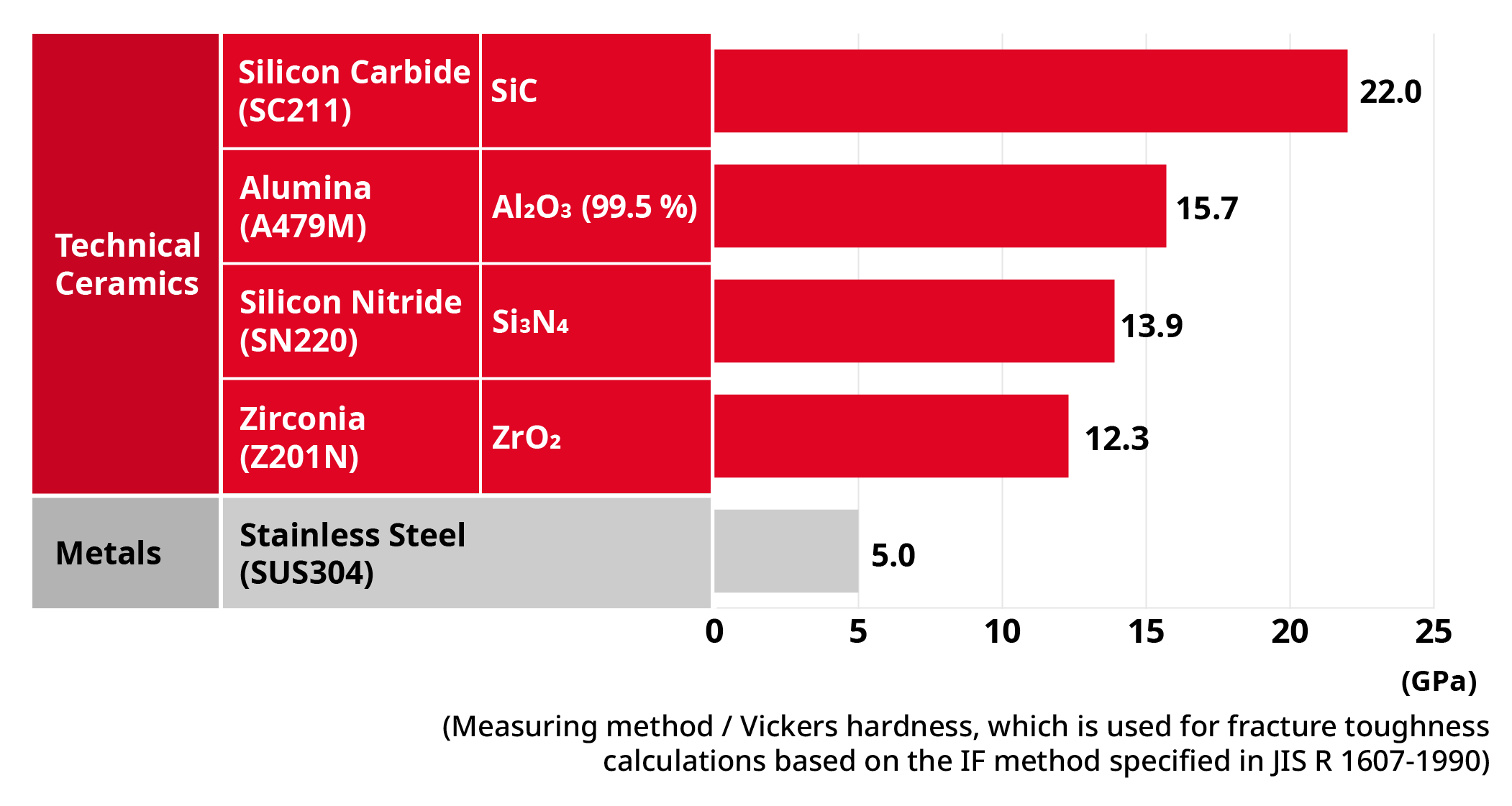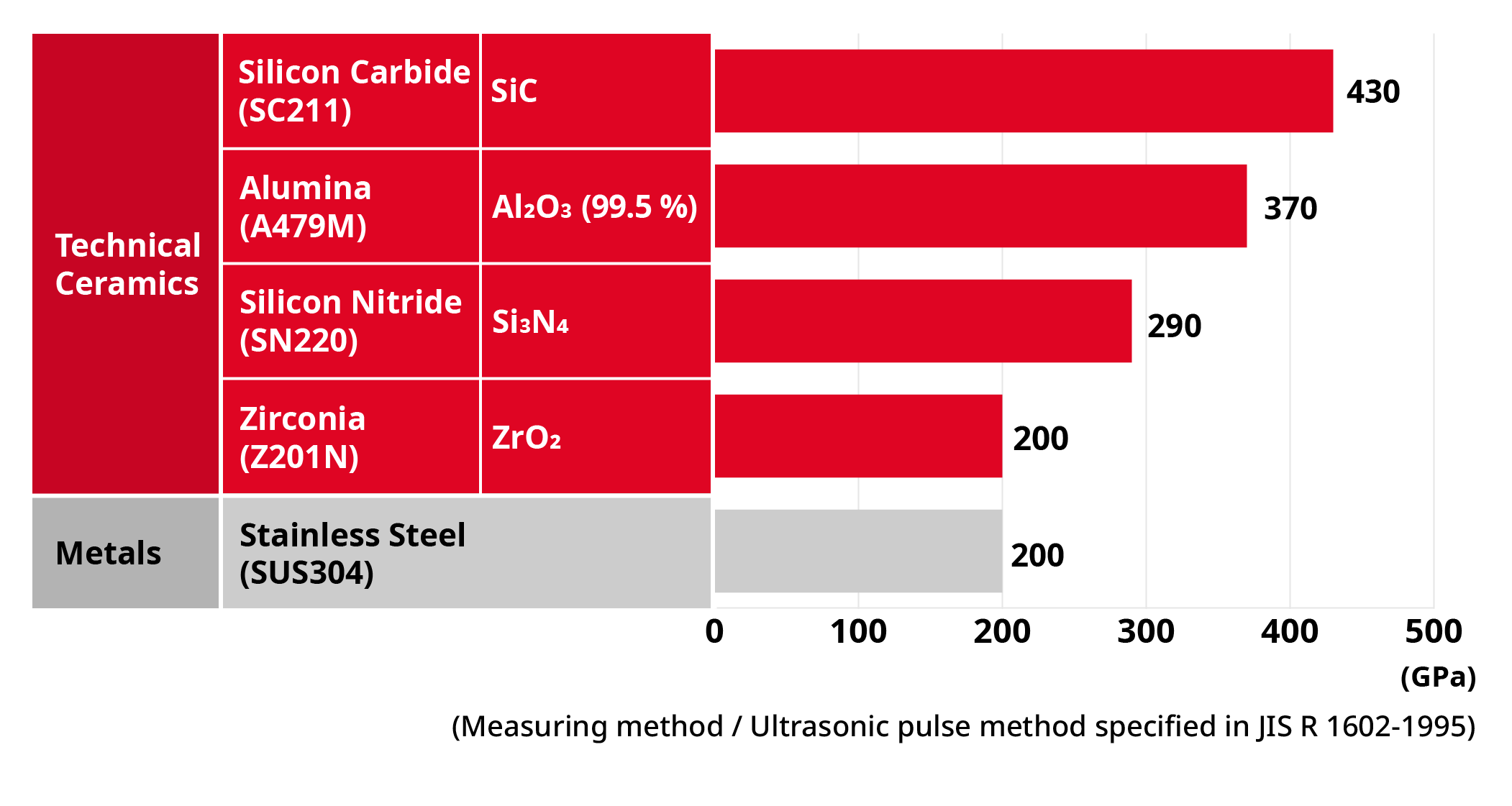technical ceramics
Superior mechanical properties
The mechanical properties of materials are generally important for the design of components. For many applications, the mechanical properties of ceramic materials are superior to those of metals or polymers. In particular, the high hardness, strength and fracture toughness, as well as the low density, make ceramics the high-performance material that they are.
Hardness
Technical ceramics are characterised by a high level of hardness compared to typical metallic materials. The hardness of a material is understood here as resistance to the mechanical penetration of another, harder body. This is typically analysed by means of an instrumented indentation test with a small, pointed diamond. Once an indentation has been made, the size or depth of the indentation is taken as a measure of hardness. For comparison, the hardness of alumina ceramic is almost three times that of stainless steel; silicon carbide is more than four times harder than stainless steel. This extreme hardness is one of many unique properties that make high-performance ceramics "super materials" for modern technology. Ceramics are therefore ideal for applications that require high wear resistance. Ceramics often show significantly less signs of wear under high tribological stress compared to technical polymers and metals.
Rigidity
Technical ceramics have a high resistance to elastic deformation compared to other technical materials. The Young's modulus, which indicates the resistance of a material to elastic deformation, serves as a measurement parameter here. Materials that deform less elastically under load have a higher Young's modulus. Alumina and silicon carbide have almost twice as high values compared to stainless steel.
The high modulus of elasticity enables ceramic components to be manufactured with the highest precision. As high mechanical stresses are applied to the material during mechanical processing, it deforms. The lower the elastic deformation during machining, the more precisely the components can be machined.
You are interested in our products or have a specific project enquiry?
Fracture toughness
Fracture toughness describes the resistance of a material to crack growth. The fracture toughness can be compared using the critical stress intensity factor KIc for vertical crack opening. If the KIc value is exceeded, unstable crack propagation sets in and the component fails.
Although advanced ceramics generally have lower fracture toughness compared to most metals, partially stabilised zirconia, used for products such as containment shells for magnetic drive pumps, offers significant improvements in fracture toughness.
Density
Due to their lower density, many technical ceramic materials weigh only about half as much as their high-strength metal counterparts for the same volume.
Density refers to the mass of a material relative to its volume. The density of technical ceramics is between 3 g/cm³ and 6 g/cm³ and is therefore only around 40 % to 75 % of the density of steel (approx. 7.8 g/cm³). The combination of the low density and high mechanical strength of ceramics makes it possible to save weight in applications. These good specific properties are particularly advantageous for moving parts, for example in mechanical engineering.




